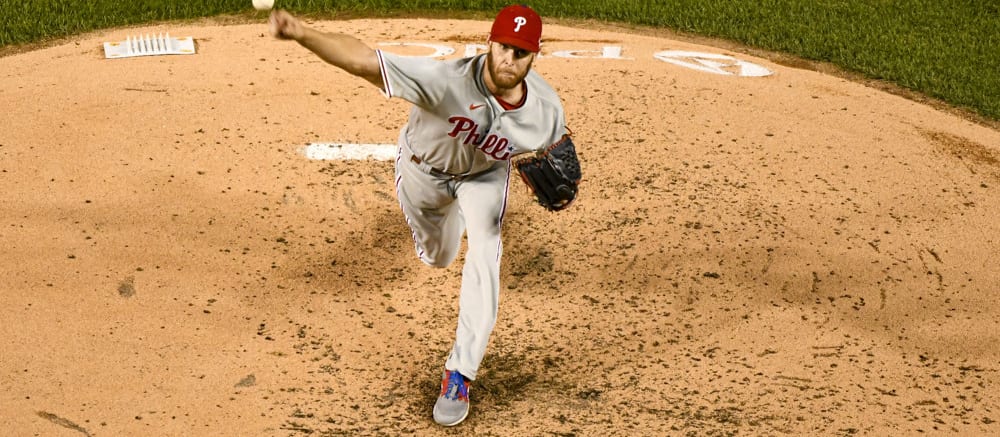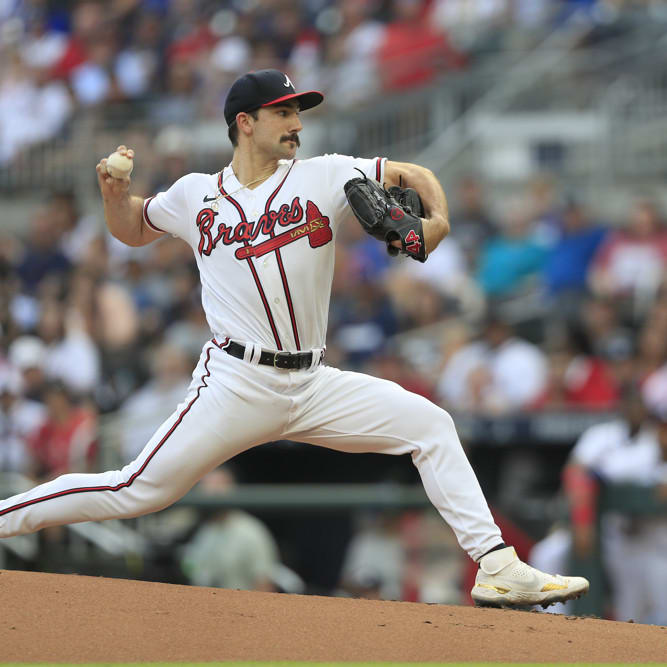What happens in a land of midgets, when one giant shows up?
I decided to do a little experiment to find out.
You see, the pitching landscape heading into 2021 is as unpredictable as it's ever been coming off last year's shortened season. Six-man rotations, decreased innings — it's chaotic. We all know buying volume (innings) will be both tough and valuable this year.
Here's the experiment I set up: I took Steamer's projections (not because I think they're the best projections but because everybody can access them publicly) and took every starting pitcher they have a projection for and prorated their statistics over 150 innings. Doesn't matter who they are, they get the same 150 innings and assume all their other projected statistics prorate accordingly.
I then ran the adjusted projection through a valuation model (I use SGPs for 15-team mixed leagues — if you have no idea what that means, don't worry about it, it doesn't matter for the purposes of this experiment). I then sorted all the starting pitchers from first (still Jacob deGrom) on down.
Then I went to the 100th ranked starting pitcher — it happened to be Brady Singer (it doesn't matter if you have him ranked much higher, or lower than 100th in your rankings, this is a math debate, not a player one). Singer is suddenly a giant amongst the midgets — he gets 200 innings pitched, compared to every other starting pitcher's 150. His ERA is still the 4.46 Steamer
What happens in a land of midgets, when one giant shows up?
I decided to do a little experiment to find out.
You see, the pitching landscape heading into 2021 is as unpredictable as it's ever been coming off last year's shortened season. Six-man rotations, decreased innings — it's chaotic. We all know buying volume (innings) will be both tough and valuable this year.
Here's the experiment I set up: I took Steamer's projections (not because I think they're the best projections but because everybody can access them publicly) and took every starting pitcher they have a projection for and prorated their statistics over 150 innings. Doesn't matter who they are, they get the same 150 innings and assume all their other projected statistics prorate accordingly.
I then ran the adjusted projection through a valuation model (I use SGPs for 15-team mixed leagues — if you have no idea what that means, don't worry about it, it doesn't matter for the purposes of this experiment). I then sorted all the starting pitchers from first (still Jacob deGrom) on down.
Then I went to the 100th ranked starting pitcher — it happened to be Brady Singer (it doesn't matter if you have him ranked much higher, or lower than 100th in your rankings, this is a math debate, not a player one). Singer is suddenly a giant amongst the midgets — he gets 200 innings pitched, compared to every other starting pitcher's 150. His ERA is still the 4.46 Steamer has him projected for, and his WHIP is still an ugly 1.40 (again, I'm not looking to debate Singer), but his strikeouts and wins — his volume — just got a big boost.
That change pushes Singer from SP100 all the way up to SP41 — he's just ahead of Eduardo Rodriguez now. That's a big jump considering his ERA and WHIP cause more damage (and thus are worth less in this valuation) the more innings he gets. Singer goes from borderline undraftable to an SP3.
To hammer the point even harder, I took the 50th ranked starting pitcher in the Steamer150 — Zack Wheeler — and gave him 200 innings. Wheeler now ranks as the 14th most valuable starting pitcher — sandwiched between Clayton Kershaw and Trevor Bauer. That's a big jump.
You might be saying to yourself: "Rob, that's interesting but stupid. You set up a rather absurd hypothetical situation by giving everyone the exact same innings. We KNOW a healthy deGrom or Bauer will throw more innings than a healthy Julio Urias or Jesus Luzardo. So… what's your point?"
My point is not to pretend that we can't project innings for starting pitchers. Of course a deGrom or Bauer should be projected for more innings than pitchers with workload concerns or those in six-man rotations.
My point was to create a framework to demonstrate just how big an impact volume is going to have on pitcher valuations this year — way more than in a normal year. This volume argument is the reason we are seeing top-tiered starting pitchers pushed up more than ever in the first four-to-five rounds of drafts. These are the guys we can count on, goes the argument. Not only are their rates elite but they should also provide the volume we're looking for.
Makes a lot of sense.
Others have argued that with innings down across the starting pitcher pool, very good pitchers with innings concerns get a value boost (think the aforementioned Urias or Luzardo). And logically that also makes a lot of sense.
But my argument here is the group of pitchers who will gain the most value because of the current landscape is actually mediocre pitchers who throw a lot of innings. At the end of the season, it will be very obvious which pitchers just "pulled a Rick Porcello" and pitched a lot of innings, leading to a lot of total strikeouts and wins.
It's much harder to forecast who those pitchers are in March. But I think it's worth the time and effort to figure out which teams are going old school — no six-man rotations, no innings cap, just take the ball every fifth day and pitch. That's where the starting pitching bargains are likely to be found — even if the skills of those pitchers are nothing special.










